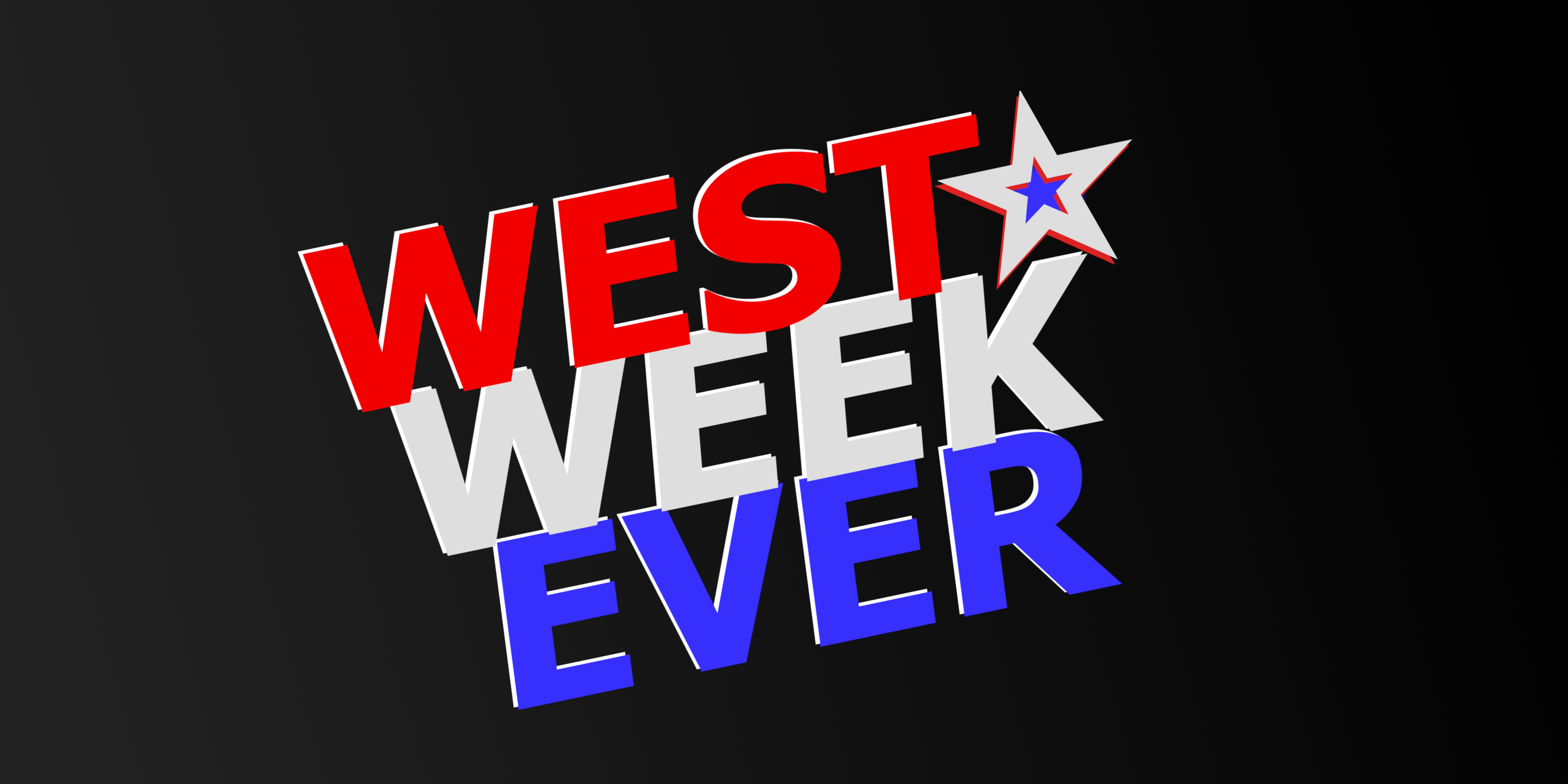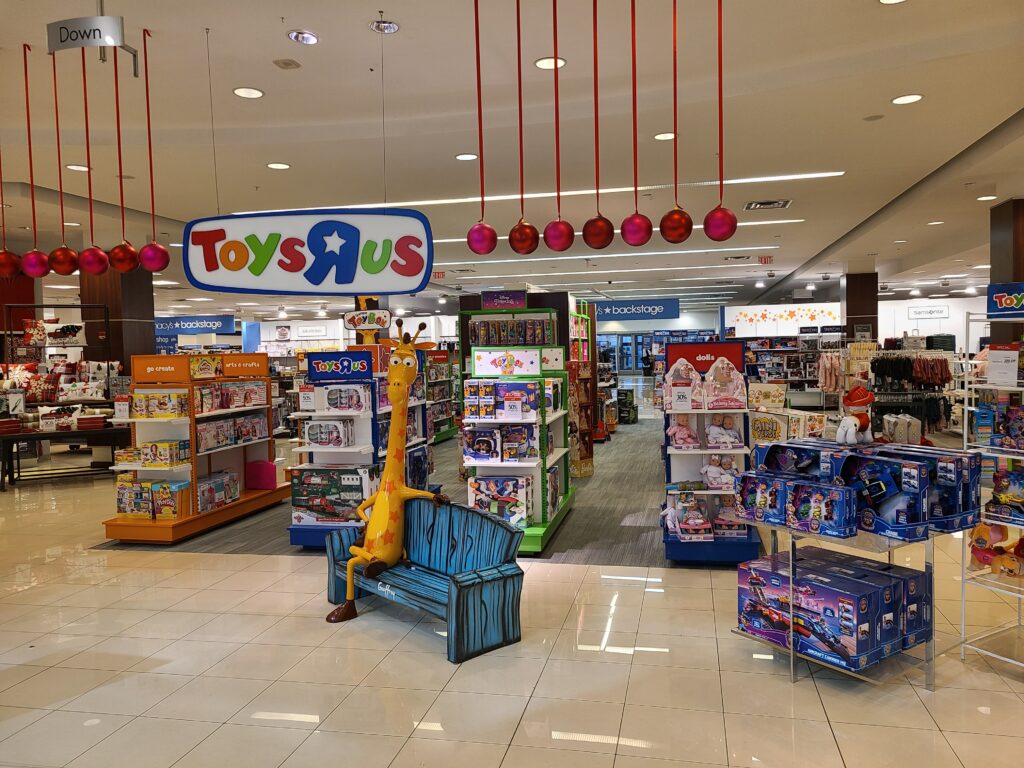
I warned you all that this feature was going to be chock full of opinions, and I’m coming into this, guns a-blazin’! I’ve had this particular thought for some time, but it wasn’t until this past weekend that it all started coming together. You see, I was at my local mall (Yup, we still have one here!), which also happened to have a Macy’s. For those not “in the know”, Macy’s department stores have been the home of the Toys “R” Us brand for the past couple years. But don’t get it twisted: when I say “home”, it’s kinda like how Harry Potter’s aunt & uncle gave Harry a home, by putting him under the stairs, and throwing him scraps of bread (See? I read your weird book!). The Macy’s setup isn’t that special, as they seem to have just dedicated some space near the center of the store, at the base of the escalator, with a random assortment of toys. There’s a Barbie section, and a Marvel section, and some Hot Wheels – all thrown together with the care and permanence of the Scholastic Book Fair. Basically, it’s nothing to write home about. Still, as far as Toys “R” Us goes (for US customers!), it’s all we’ve got. It didn’t have to be this way, though. When the storied brand closed the doors of its US retail locations in 2017, there were almost instant reports that TRU was coming back. And all attempts have pretty much failed. Well, I’m here to tell you why this happened, as well as how Toys “R” Us can finally be saved.

First off, some history. Toys “R” Us was founded by Charles Lazarus, who was a DC-area entrepreneur who joined his uncle’s furniture business after returning from WWII. In 1948, he opened Children’s Bargain Town, which focused on selling cribs and strollers. Early on, he noticed he had more repeat customers for the toys he carried – After all, families are only going to buy one crib, but they’ll keep coming back as their kids continue to outgrow certain toys. In 1957, he opened the first Toys “R” Us store, in Rockville, MD (which would also end up being my childhood store), and the rest was history.
Out of the gate, the retail chain was considered a “category killer”, as it specialized in one category (toys), and was able to undercut other, smaller retailers through wide selection, low pricing, and market penetration. In the 80s, the branding really began, as mascot Geoffrey the Giraffe (originally introduced as Dr. G. Raffe in the 50s) took hold, and the familiar jingle “I’m A Toys ‘R’ Us Kid” was introduced. International expansion began in 1984, as the chain opened its first store in Canada, with parts of Asia and The UK following in 1985.
The culture of the 1980s really helped with TRU’s expansion, as the Reagan era’s deregulation allowed for the creation of the Program-Length Commercial. Every cartoon you loved from the 80s? I’m talking Masters of the Universe, G.I. Joe, ThunderCats, etc. ALL toy commercials. Don’t come to me with “But…but…” Argue with your mama! Yes, it’s a bit more nuanced than I’m making it, but I have limited time with you here, and there are a ton of resources out there where you can learn more about this concept. On top of this practice, there was also the explosion of the home video game console market in the US. And Toys “R” Us rode the wave of all of these phenomena. Little did the company know that this very home console thing would eventually hurt them, as kids gravitated away from toys. But that would be quite some time away yet.
Lazarus stepped down as CEO in 1994, but things were still good: The store had done well with the Teenage Mutant Ninja Turtles cultural takeover, as well as the hit that was the Super Soaker. And now it had Power Rangers! The Talkboy (Thanks, Home Alone 2!)! Polly Pocket! And they were soon to have Tickle Me Elmo and Super Nintendo! Lazarus was eventually replaced (after 2 other successors flamed out) by John Eyler – former CEO of FAO Schwarz, and things were “good”, for the most part. As Walmart had surpassed TRU as the #1 toy retailer at this point, Eyler’s focus was on making the toy buying experience better for the consumer, with redesigned stores to move away from the brand’s “warehouse” look. It was also on Eyler’s watch that the Times Square flagship store was opened. Before it could be clear whether or not Eyler’s changes were working to “right the ship”, Mitt Romney and his Bain Capital friends showed up, and acquired the company through a $6.6 billion leveraged buyout, taking it private. And that, my friends, was the beginning of the end. I won’t go into the nuances of private equity firms, but let’s just say they’re corporate vampires. They grab a company, suck it dry of any value, and then move on to the next one. A common misconception is that Toys “R” Us went under because “they weren’t making any money”, but that’s not what happened. When private equity funds acquire new companies, they saddle them with debt from prior transactions. So, TRU still made money, but they simply didn’t make enough to emerge from the debt they’d acquired through the acquisition. It’s the macroeconomics version of “Robbing Peter to pay Paul”.
Instead of a quick, merciful death, Toys “R” Us proceeded to slowly bleed out over the next decade. A few gambles, such as acquiring the KB Toys IP, hadn’t paid off for the company. On September 18th, 2017, the company filed for Chapter 11 bankruptcy, which, when it comes to bankruptcies, is commonly thought of as ‘The one you can come back from”. It’s meant for reorganization, so the company can get its ducks in a row. Originally thought to only affect the North American stores, once the ball got rolling it was clear it would end up affecting the international brand. Within 6 months, the company announced that it would be closing all US locations (all the international iterations, however, found new owners). And, in a coda that I wouldn’t believe if I had seen it in a film, founder Charles Lazarus died March 22nd, 2018 – the very day before liquidation sales were set to begin at US locations. All those stores were closed by June 29th, 2018.
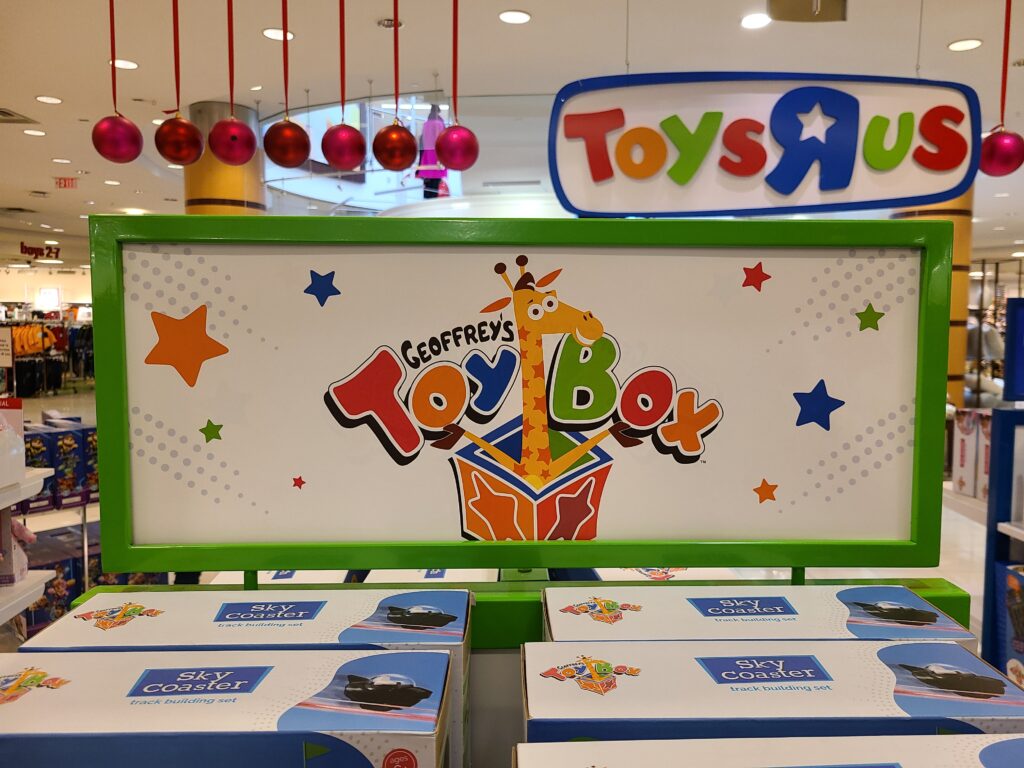
Later that year, the company introduced a new concept, called Geoffrey’s Toy Box, where it would establish a brand presence in Kroger-owned grocery stores (?!) across the country for Christmas. These were basically cardboard shippers, which contained store brand items, like race tracks and whatnot. To say this “resurrection” was a disappointment would be an understatement. A few months later, the company emerged from bankruptcy as TRU Kids, Inc, and announced plans to open 2 new retail stores in shopping malls. The stores opened in late 2019, at Westfield Garden State Plaza in New Jersey, and The Galleria in Texas. Then March 2020 came along, and the world stopped. Not the best thing for shopping malls. As a result, both stores closed in January 2021. Just 3 months later, WHP Global acquired controlling interest in TRU Kids, with even more comeback plans. They were gonna open stores EVERYWHERE: malls, airports, your grandma’s basement! Look under your seats: Toys “R” Us stores for everyone! Then, they realized they had probably bitten off more than they could chew, and they came back down to Earth. They announced that they would first open up “stores” in existing Macy’s department store locations. And that’s where we started off today. Oh, and they opened another mall store in New Jersey, this time a two-story flagship store at the American Dream mall. According to reports, there’s a smaller concept store set to open at the Dallas Fort Worth International Airport next month. I’m here to say that, ultimately, both store concepts will fail. I will, however, tell you how a corporation could save Toys “R” Us and make it successful again.
The common thread with all of the attempts at resurrecting The House of Geoffrey is that they don’t understand the brand. At all. They see its vacancy as a case of “leaving money on the table” and, in true private equity fashion, they just want that money. Along with Toys “R” Us, WHP Global’s portfolio consists primarily of clothing brands, including Anne Klein, Express, and Justin Timberlake’s failed William Rast. In fact, there isn’t another brand under their umbrella that even comes close to the toy industry. No entertainment. Not even food. Just clothing. That said, there are 2 executives on the WHP Global team with TRU experience – however, they hail from the time when The Troubles began, post Bain acquisition. So it’s not like they ever really experienced the place at its height.
One of the biggest issues of the Bain era was that Toys “R” Us never figured out how to change with the times. They were behind the curve on the internet, as their whole web commerce setup was a mess. They were an early adopter of variable pricing, which they referred to as “Bump Up” stores, where you might end up paying more for an item if the store was located in a nicer neighborhood than other stores. It was a company that continued to find itself falling behind, as it either refused, or simply couldn’t figure out how, to innovate. What I’m saying is that the company’s demise wasn’t exactly a surprise, as it had been a long time coming. Sure, Toys “R” Us was a valuable brand, but the folks running the place didn’t know how to best cash in on that. And that’s still the case.
The thing no one seems to have pointed out, however, is that every attempt to revive TRU has tried to do so from the point where the old brand left off. There’s been this overwhelming desire for continuity, as if to say “We recognize there’s a toy retail vacuum left by our absence from the marketplace, and we aim to fill it by coming back!” But, ya see, that approach would only be successful if the stores had been firing on all cylinders at the time they closed. And they weren’t. No, you could easily say that the last decade of the company’s US existence was a steady decline from which they never pulled up. During this time, Toys “R” Us wasn’t exactly a “respected brand” anymore. Sure, folks remembered how it used to be, but they knew they weren’t getting that experience any longer, as Walmart and Target were cornering the Adult Collector market, by locking in exclusives with toy companies. As for regular kids, parents could find the popular items cheaper at those other big box stores. And then there’s video games. Children weren’t exactly as into toys, as entertainment was evolving. Toys “R” Us couldn’t figure out how to adapt to an everchanging industry, as there were just too many moving parts.
So, to bring Toys “R” Us back to its glory days, you’ve got to return to its best era. You’ve got to treat it like a film franchise where movie #4 ignores the events of movies 2 & 3, and instead purports to be the “direct sequel” to the original movie. The new owners need to forget EVERYTHING about the TRU brand from the past 20 years. That’s from the marketing on down. First off, get rid of this thing:

I don’t know who the Hell that is. That sure ain’t Geoffrey. Yeah, it’s a giraffe, but it’s not THE giraffe. Around the late 90s, the company started experimenting with Geoffrey’s appearance. They transitioned to a live action giraffe, but then eventually settled on this guy, who was manning the helm at the time the store closed. In fact, he’s the version still being used in the current Macy’s setup. And it wasn’t just a mere redesign, as they created an elaborate backstory for this version of Geoffrey. While retconning his wife & children from the 80s incarnation, this Geoffrey comes from another world, and when he found himself on Earth, his spots had been changed to star shapes. There’s a whole storybook about this, that they gave out to Geoffrey’s Birthday Club members! No, we don’t need all that. The money is in nostalgia, and they need to “go Stranger Things” all over this brand. They need to be the Johnny Rockets of toy retail. Why? Because there isn’t already a Johnny Rockets of toy retail. Sure, times were never exactly like that, but “history is written by the winners”, and it would be TRU’s narrative to control. I mean, KB Toys sure as Hell isn’t gonna challenge them. It’s their throne to claim. So, we bring back 80s/90s Geoffrey. Just the mere sight of him is gonna trigger those nostalgia endorphins in Gen X/Elder Millennials.

Along the lines with that marketing, you’ve got to bring back the song. That jingle is one of the most recognizable of the era, and it’s just going to waste. One thing I noticed is that these attempts to bring back TRU never include a Grand Opening. There’s never really been a big media push behind the new stores, but rather a quiet, soft opening. If you’re going to do it, you’ve got to do it BIG. So, the song. Remember back during COVID, when Gal Gadot caught all that flack for her tone deaf cover of “Imagine”, with all her famous friends? Well, TRU needs to do that with “I’m a Toys “R” Us Kid”, but sung by the hottest artists *of a certain age*. Notice that last part, as age is very important. You can’t have Ariana Grande or Machine Gun Kelly, as Toys “R” Us means next to nothing to their cohort. No, I’m talking Alicia Keys, Justin Timberlake, maybe John Mayer. It’s gonna take some money, but they’ll need to spend it if they’re serious. Nobody under 35 has fond memories of the “Golden Era of Toys ‘R’ Us”, so that’s who you’re aiming for. After all, everyone under 35 hates ads, so don’t even waste the promotional dollars on them.
We’ve got the branding down, so now we’ve gotta figure out where we’re gonna put these stores. That’s right: it’s time to talk real estate! Out of the gate, we’ve got to decrease the size of the Toys “R” Us footprint. The average Toys “R” Us retail location was roughly 30,000-40,000 SF, compared to the current Macy’s TRU space, which ranges from 1,000-10,000 SF. Meanwhile, the current “flagship” store in American Dream mall is a two-story location, clocking in at 20,000 SF. I’d argue the company doesn’t need a flagship store, but more about that later. One of the things that always struck me was how TRU was this VERY LARGE store, that focused (primarily) on children’s playthings. It’s one of those capitalist society concepts that seems sort of crazy when you think about it. We didn’t need all of that and, ultimately, the market couldn’t support that in the long run. No, TRU doesn’t need anywhere near as much space as it used to occupy.
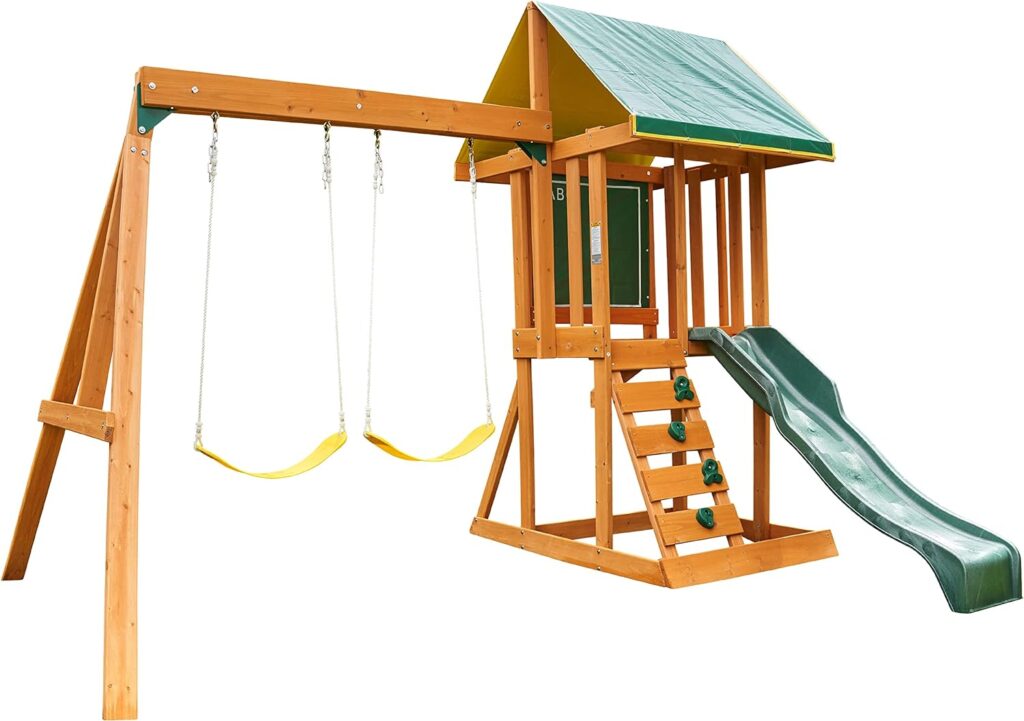
First off, they need to get out of the “outdoor business”. By that, I mean no more bikes, Power Wheels, swing sets, slides, etc. A lot of that stuff is seasonal, so TRU’s got months out of the year where they’re simply not moving that merchandise, yet still paying rent to store it. There are better places to buy bikes, and the TRU ones aren’t even put together that well to begin with (trust me!). The new stores won’t have the space for much of a back room, as most merch will go directly to the floor from the truck. So, not a lot of places to stash Step 2 sandbox inventory in November. Meanwhile, that Barbie Power Wheels ain’t gonna fit in that customer’s Civic anyway, so they’re going to need to arrange some sort of transportation. Just let them order that thing off Amazon, and get it delivered. Might seem drastic, but that section isn’t needed. Cede that market share to a competitor with better resources, as it’s more trouble than it’s worth.
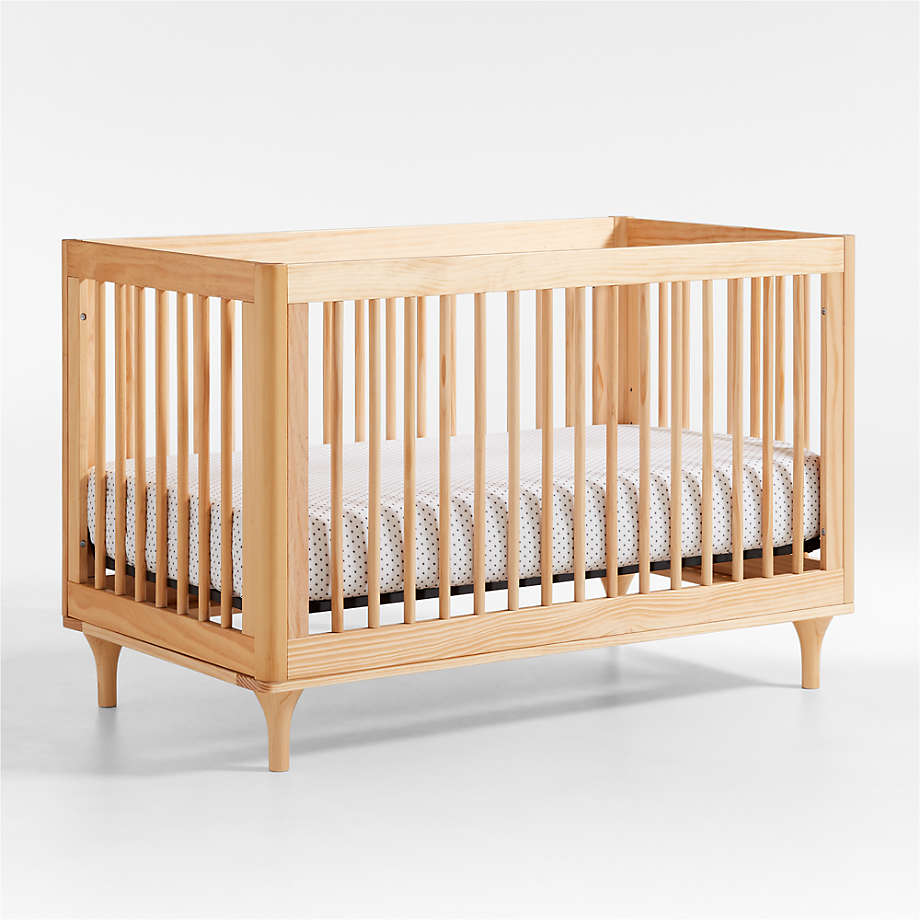
Next, get out of the baby business. This one is probably the most controversial change, as baby items were BIG business for them. In fact, there was a time when it would have made more sense for them to exit the toy space and just focus on baby items. Meanwhile, the company would go back and forth between allowing Babies “R” Us to be a standalone concept and also merging them with TRUs, in a side-by-side concept. I think that’s an area they could look into reentering down the road but, for now, they need to put the “toys” back in “Toys ‘R’ Us”. Plus, just like the outdoor items, baby inventory is large, and takes up a lot of space. Reentering the baby space should be an aspirational goal, but not something to do in the beginning of the “rebirth”.
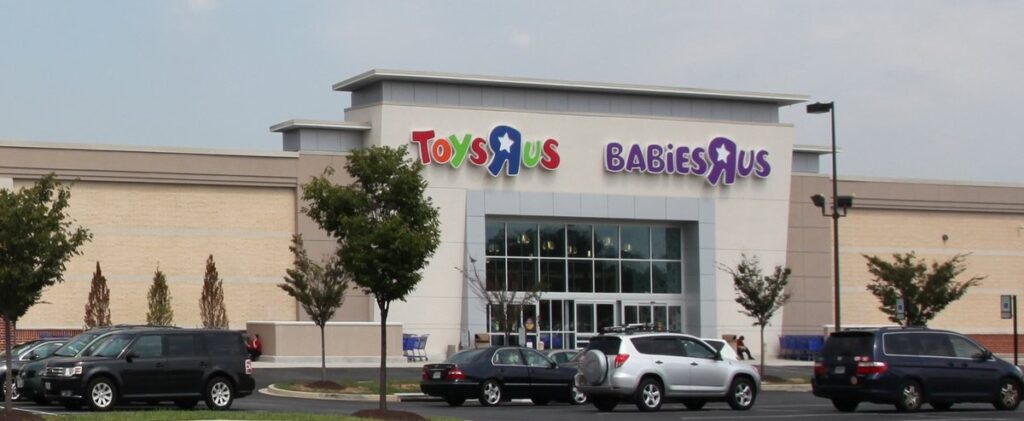
Let’s look at a case study: There was a Toys “R” Us located at 6100 Dobbin Rd, in Columbia, MD. This was a “side-by-side” concept, comprised of both Babies “R” Us & Toys “R” Us units. The property itself was roughly 62,000 SF, with each brand occupying half of the building. If we remove the BRU portion (31,000 SF), we’re left with a TRU unit of roughly the same size. If you remember from above, that’s about the historical starting size of an average TRU store. I’d argue that Nü TRU could (and should) operate in a space half that size. You don’t start out performing in stadiums, you start in clubs. This is a comeback tour, but they’ve got to win back their fans. The smaller footprint brings lower rents, as well as allows the company to carefully curate item selection, as opposed to just carrying everything. For comparison’s sake, an average Five Below store is 8,000 SF. So, a TRU roughly twice the size of a Five Below is more than enough space. Seeing as how the average CVS is 8,000-13,000, and considering the closing of multiple CVS locations nationwide, a TRU with a 15,000 SF footprint allows it more options in terms of location scouting. Whereas it used to be a big box store in power centers (a commercial real estate term for an outdoor shopping center primarily comprised of big box stores), Nü TRU would be found in neighborhood shopping centers (usually anchored by a grocery store and/or Target). If successful, TRU can, then, look into expanding into larger spaces, and even get around to that flagship store they seem to think they so desperately need…
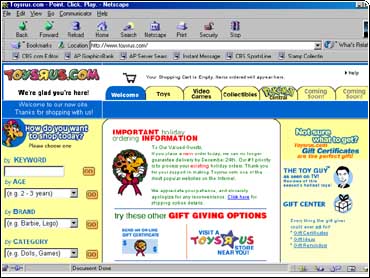
Tackling marketing and location are the easy parts. There’s one final aspect that needs to be addressed, if the company is to have any chance at long-term survival, and I’m afraid even I haven’t figured this part out yet: online presence. Toys “R” Us was late to the internet, and didn’t really know what to do with itself once it got there. You see, early in the dotcom era, TRU got into bed with Amazon in an exclusive deal that didn’t really work out for the company. Once they decided to build out their own web presence, they had already lost valuable years, and couldn’t catch up to the competition – namely former partner, Amazon.
At the moment, the online toy space is pretty much comprised of two tiers: the regular, mass market outlets, like Target/Walmart/Amazon, and the collector-focused “little guys”, with much more limited selection, and slightly higher costs, like Big Bad Toy Store and Entertainment Earth. Toys “R” Us is going to need to forge a path straight through the middle of these. They’re not in the position to just slip back into their old dominant role, but they also need to offer something better than the BBTSes & EEs of the world. I propose that TRU present something of an amalgam of the two: a mass market retail operation that also has a premium, subscription tier for access to additional, exclusive goods and services.
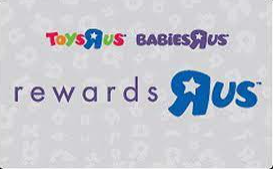
Think of it like the GameStop rewards program. There’s the free version, which everyone can sign up for, yet there’s the Pro membership, which opens up more deals and opportunities. Now, the old Toys “R” Us had the Rewards “R” Us program, but it was in the nascent days of retailer rewards programs, and many have come so far since then. So, you’d have a regular, free “TRU Rewards” membership for all customers, yet the collector-minded customer could sign up for TRU Rewards Pro (that comes with a revenue-generating subscription fee), which would allow easier access to certain retailer exclusives that have been lined up with manufacturers, such as Mattel and Hasbro. The other mass market retailers also have retailer exclusives, but they don’t provide a “curated experience”. Sure, Walmart might do “Collector Con” and then there’s Target Con, but those are just weeks when exclusive products are available for preorder. The Pro account would also come with a lower threshold for free shipping on online purchases. This is going to be tough, though, as it’s going to be impossible to undercut Amazon, seeing as how they’ve got their own distribution network. In any case, there’s so much more that can be done with that experience, and TRU is going to need to innovate in that space to set themselves apart from what’s already out there.
They’re also going to need an app. If Subway’s got an app, Toys “R” Us is going to need an app. It wouldn’t have to be too robust in the beginning – a standard retail app, where customers would track their rewards, it would have website integration, and inventory checker/price scanner capabilities.
Now, the site experience itself… I’m lost, as there isn’t really an example out there, in this industry, that I feel TRU should emulate. Target’s site is lackluster, as is Walmart’s. Everyone’s site could be better, and if TRU can figure out how to truly innovate in this space, that would really set them apart. One thing that I would insist upon in the beginning is that the site only feature items both carried, and fulfilled by, Toys “R” Us. Too many web portals (Walmart and Amazon, for example) open up listings for 3rd party sellers, which aren’t always vetted, and can provide a lower quality experience, either in pricing or customer service. In order to really rehab their identity, TRU is going to have to do some heavy lifting, and they can’t afford to have that affected by outside parties. This is something they can explore down the road, when looking toward expansion.
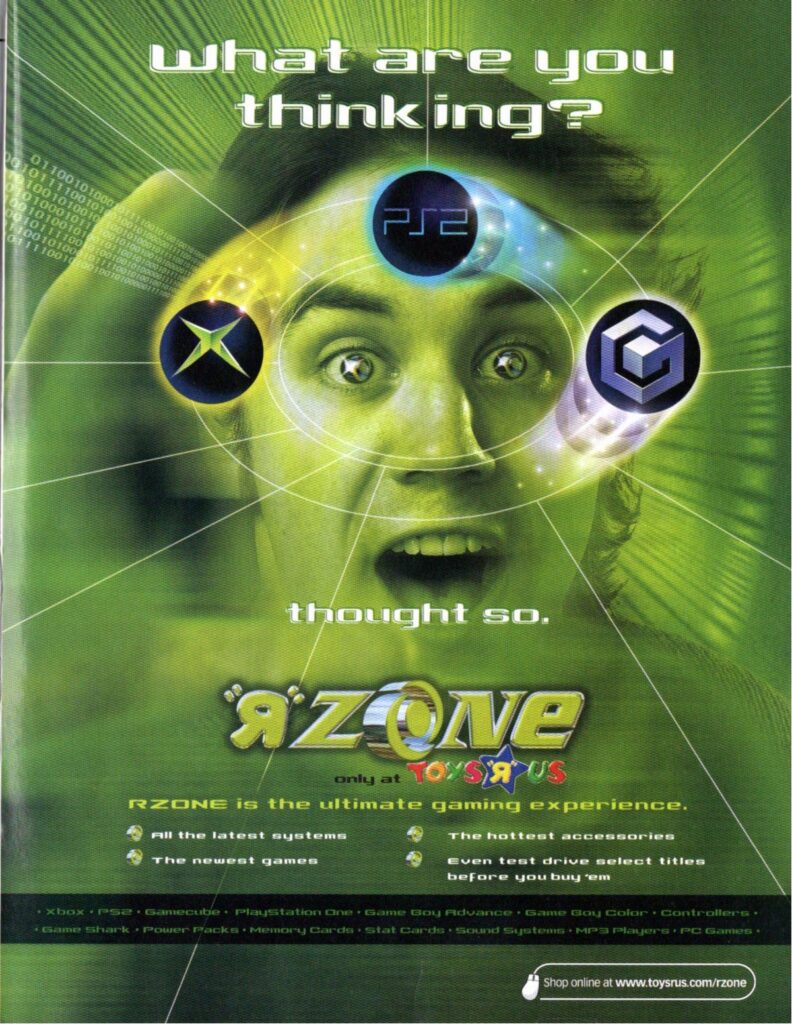
Notice that I completely ignored video games and electronics. Yes, the R-Zone is a TRU fixture, but the whole video game console space is in flux right now, as there are constant rumors of the permanent elimination of physical discs, which would take TRU out of the equation. I’m sure someone could figure out how to get a piece of that digital purchase, but would it be worth it? I look towards the comic industry, and how they still haven’t figured out an efficient way for brick & mortar retailers to benefit from customers moving to online purchases. I remember there was a system, where customers would go to the comic shop, and then buy their digital comics through a POS interface at the shop, which ensured that the retailer ended up getting a piece of the sale. That was dumb, though, as it required unnecessary travel, plus you’ve got to really care about your retailer’s wellbeing to participate in such a convoluted process. I don’t have all the answers when it comes to the digital marketplace, as I’m just an old man, but I would say that TRU doesn’t need a full-fledged R-Zone at launch. They could, however, have a dedicated area for games and consoles that’s about the same size as what Target and Walmart have. So, at most, a vastly reduced R-Zone than what it was at the time of the original company’s withdrawal from the US.
So, 4,000 words later, these are the areas on which Toys “R” Us needs to focus if they’re to truly reestablish themselves as a force to be reckoned with in the toy industry. They need to reinforce their brand, through an appeal to nostalgia, to remind folks who they are and why they’re important. Nothing – and I mean NOTHING – from the past 20 years of the company needs to be acknowledged. Stop pretending like the company went under when it was at its height. Instead, bring it back to the era when it truly was at its height. Next, a decreased footprint will allow more versatility in locations, taking advantage of recently vacated retail space, such as former CVS and grocery stores. We’re not talking GameStop small (which somehow manages to do a lot with an average of just 1,400 SF), but nowhere near the superstore category it used to occupy. They don’t need anything more than 20,000 SF, and I’d recommend they try to stay under 15,000. Finally, they have got to figure out something to do in the online space. I don’t have the answers there, but that’s something that was notoriously missing from their priorities in the past, and if you don’t have a successful web portal these days, then you’ve already lost. In an increasingly “I don’t go to stores” society, a good portion of their sales are going to come from online – sales that they were missing out on in their previous incarnation.
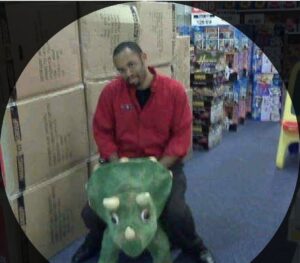
Now that we’ve come to the end, I’m sure someone is wondering, “Who the Hell are you, and why do you think you know what you’re talking about?” Well, I’m glad you asked! I was a Part-time/Seasonal Toys “R” Us employee for over a decade, but also an avid, lifelong customer. That Columbia, MD store I mentioned? That was my store. I saw that company from both sides of the fence: I started working there prior to the Bain acquisition, and I finished my time well into that era. As a customer, I experienced the Times Square store, and I even took a pilgrimage to first relaunch attempt with the New Jersey store, during its final days. I also spent a lot of time actually studying the industry, as I once had aspirations to do more than just unload Lash Tamaron boxes. Oh, and the real estate stuff? I worked in commercial real estate research for a spell, too. So, there’s some sense to what I’ve just rattled off. It didn’t just come from nowhere! Anyway, at the end of the day, I want Toys “R” Us to succeed. I’m a World Class Hater, but this is something I’m rooting for, and not against. I think it is an experience that is sorely missed, and there’s a space that it can occupy. No, it didn’t do everything right – especially in those last years – but there was a time when it did. I understand the industry, as well as the way in which children play, has changed. The key is adaptability. It’s a difficult space to navigate, but I don’t think it’s impossible if you do some research, and go in with a strong plan. The past few attempts weren’t built on strong plans. They were built more on cashing in on the name than actually doing anything with it. They failed to connect What TRU meant to What TRU did. By the end, it wasn’t THE place to buy your toys, from both a customers service and an inventory standpoint. It always felt like the toys came second, and customers realized this. It’s time to start over, and fix what wasn’t working. Geoffrey, it’s time to come home!
